Technology

5 min
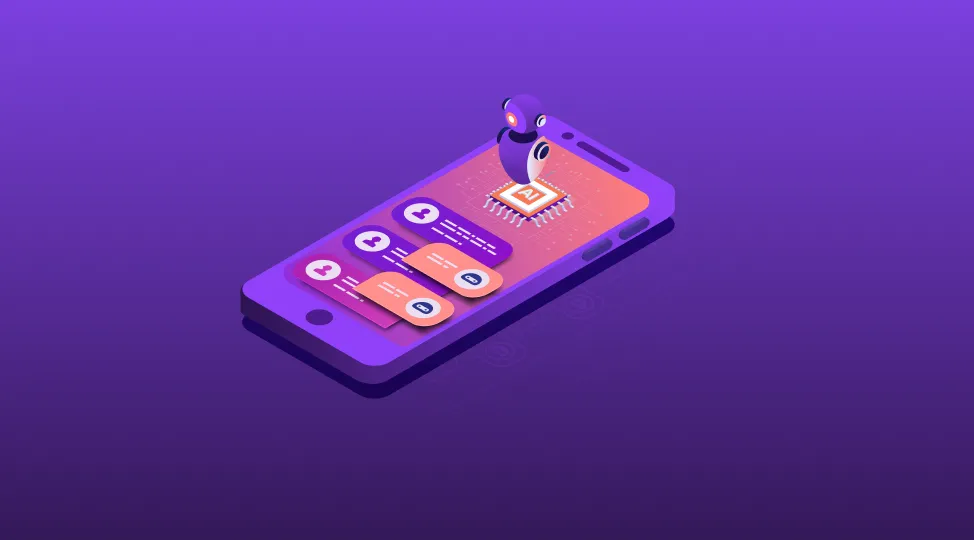
Explore this complete guide on enterprise ai chatbot development service. Learn what is AI chatbot, top tools, real use cases, chatbot implementation steps, and cost breakdown. Discover how AI chatbot development in USA helps streamline support, ecommerce, and internal workflows. From conversational AI chatbot design to AI chatbot integration, this guide covers it all.

By Dhruv Joshi
29 Jul, 2025
Enterprise Teams Are Under Big Pressure Right Now.
If you’re running or working inside an enterprise, you already know it. The pace is fast. The expectations are high. And the resources? Always stretched.
You’re supposed to be available around the clock. Keep customers happy. Cut costs. And somehow do all that with fewer people and tools that feel stuck in the past.
Sound familiar?
Here’s a number we experienced that makes it worse, 82% of consumers expect instant replies when they reach out to a brand. Not in an hour. Not tomorrow. They want answers now.
And here’s the good news, AI chatbot development service is helping businesses meet that demand. For real.
According to IBM, companies are saving up to 30% on customer service costs by using chatbots. That’s not a small change. That’s a game changer.
So, if your team is buried under support tickets, if your agents are burnt out, or if your systems are slowing you down, this guide is for you.
Now let’s take it from the top, starting with the biggest question most teams still ask.
AI chatbot development is just the process of creating smart bots that can chat with people like a real human would. These bots use artificial intelligence to understand what people are saying and give helpful replies back.
They don’t talk like robots. They learn. They adapt. They actually help.
These bots use things like natural language processing (NLP) and machine learning to figure out what the user means even if it’s not said perfectly. They also connect with other tools and systems, like your CRM or ecommerce platform, to get real answers fast.
Unlike the old-school bots that only gave you fixed replies like “Press 1 for support,” modern conversational AI chatbots are way smarter.
Here’s what they can do:
They do more than just answer FAQs.
These bots help real teams get work done. They can automate tasks, support customers, answer HR questions, help people shop, and even assist your sales team - all at once.
Building enterprise-grade bots comes with a few hurdles:
Solving these requires strategy, not just code. Many enterprises also turn to AI chatbot development in USA for expert teams that understand regulatory and infrastructure complexities.
Investing in AI chatbot development service pays off in multiple ways:
Whether you're a startup or Fortune 500, smart bots can level the playing field.
Let’s keep this simple. Not all chatbots are built the same. Different businesses need different bots. Some are basic, others are smart. Some are good for quick replies, while others can hold real conversations.
Here are the main types of AI chatbots you should know:
These are the old-school bots. They follow a script. You set rules, and they follow them exactly.
Best for:
They don’t learn or get smarter over time. But they do the job if your needs are basic.
These are a step up from rule-based bots. They show users a set of options like menus or buttons to choose from.
Great for:
They’re easy to use and don’t require users to type anything.
Now we’re getting smart. These chatbots use artificial intelligence, mainly NLP (natural language processing), to understand what people say — even if it's typed in a weird or informal way.
They can:
They keep learning and get better over time.
As the name says, this one mixes rule-based with AI-powered logic. It’s a flexible model.
They’re smart but also structured. If AI doesn’t know the answer, rules take over.
Perfect for:
These are voice-first bots. Think of Alexa, Google Assistant, or Siri. You talk, they listen and reply.
Useful for:
They make life easier in situations where typing isn’t ideal.
These are the newest generation. They use powerful models like GPT to understand complex language and reply in a human-like way.
They can:
Help with product suggestions in an AI chatbot for ecommerce
If you want a chatbot that sounds less like a machine and more like a team member, this is it.
Each type of chatbot serves a different goal. If you're not sure where to start, think about what your users need. Then pick the bot that fits that journey best.
| Chatbot Type | Complexity | AI Level | Enterprise Use Case Examples | Scalability |
|---|---|---|---|---|
| Rule-Based | Low | None | FAQ bots, routing assistants, simple form-fill workflows | Moderate |
| Menu/Button-Based | Low | Low | Booking bots, product browsers, step-by-step service flows | High |
| AI-Powered | Medium | High | Customer support bots, HR assistants, IT helpdesk bots | High |
| Hybrid | Medium | Medium | Customer care bots with fallback logic, smart workflows | Very High |
| Voice-Enabled | Medium | High | Field service tools, smart office assistants, hands-free use | Moderate |
| Generative AI | High | Very High | Ecommerce bots, content assistants, deep contextual support | Very High |
Let’s break this down clearly. AI chatbots are no longer just tools for answering FAQs. Today, they’re smart digital workers. They help teams save time, cut costs, and get more done without needing to hire more people.
No one wants to wait in line or sit on hold anymore. With AI chatbot development in USA, your business can answer customer questions fast 24*7 without needing more support staff.
Use it for:
Customers get instant help, and your team gets fewer tickets.
If you run an online store, you know how much effort it takes to support every shopper. An AI chatbot for ecommerce can guide users through the journey — from browsing to checkout.
Chatbots can:
This means more sales, fewer returns, and a better shopping experience.
AI chatbots are also powerful inside your company. They can make work smoother for employees.
Use them to:
This reduces back-and-forth emails and helps teams focus on real work.
In healthcare, time and accuracy matter. That’s why AI in healthcare apps often includes chatbots that support both patients and staff.
They can:
Patients get help faster, and clinics save hours every day.
Don’t let leads slip through just because your team was offline. A smart AI chatbot can handle the first part of the sales process automatically.
It can:
Then it passes the hot leads to your human sales team. It’s like a digital sales rep that never takes a break.
In large companies, IT teams get swamped with basic requests. AI chatbots can help employees troubleshoot simple problems on their own.
Examples:
Bots can guide them through solutions or log tickets without any human help.
You can also use AI chatbots to make your finance or procurement processes smoother.
They can help with:
This avoids bottlenecks and improves compliance too.
Whether you're building it to support customers, assist employees, or speed up vendor communication, this step-by-step roadmap will guide you through everything — with zero fluff.
This isn’t just theory. These are real steps enterprises follow to build bots that work, save money, and improve service. So, take notes or bookmark this.
Step 1: Define Your Use Case Clearly
Don’t just build a chatbot because it sounds cool or trendy. Start with a real business goal.
Ask yourself:
Who exactly will use the chatbot? Will it be customers on your website, employees inside the company, or external partners like vendors or clients?
What pain point or problem will it solve? Will it reduce support tickets? Speed up onboarding? Automate product tracking?
What tools, apps, or systems will it need to connect with? Think about CRMs like Salesforce, HR tools like BambooHR, or ecommerce platforms like Shopify.
Step 2: Pick the Right AI Chatbot Development Tools
Your chatbot is only as good as the platform behind it. This step makes or breaks the project.
You need tools that are:
Look for platforms that offer:
Popular AI chatbot development tools you should check out:
Dialogflow, Rasa, IBM Watson, Yellow.ai, and Kore.ai.
If you’re in the US, there are also many local experts Like Quokka Labs you can reach, who specialize in AI chatbot development in USA with enterprise-grade infrastructure and compliance support.
Step 3: Design the Conversation Flow
This step is all about user experience. A chatbot is a virtual guide. It needs to talk like a human, not a machine.
Plan out every step of the conversation — what users might ask, what the bot should respond with, and how it will guide the journey.
Best practices for enterprises:
Sketch these flows visually. Many chatbot platforms let you map them out like a tree, so you can see how conversations branch.
Step 4: Build, Train, and Integrate Smartly
Now comes the real part. This is where your AI chatbot starts to take shape.
You can build it with your own team, or you can bring in experts who offer AI chatbot development services. Either way, this step matters a lot.
Here’s what you need to focus on:
Step 5: Test Before You Launch
Don’t hit go without running real tests. Chatbots may seem simple on the surface, but under the hood, there’s a lot going on.
Here’s what you need to test:
Step 6: Go Live and Monitor Everything
Your bot is built, tested, and ready to go. But hold on. Don’t launch it to everyone at once.
Start small. Run a soft launch with a limited audience — maybe just 10% of your traffic. Collect data and feedback. Watch everything closely.
Metrics you should track:
Here’s a rough breakdown of chatbot implementation cost for enterprise-level projects:
| Chatbot Type | Estimated Cost Range |
|---|---|
| Basic FAQ Bot | $3,000 – $10,000 |
| Mid-Level Functional Bot | $15,000 – $40,000 |
| Full Enterprise AI Chatbot | $50,000 – $250,000+ |
Costs depend on:
Pro tip: Start with a limited rollout to prove ROI, then scale gradually.
Seamless AI chatbot integration is non-negotiable.
Here’s what to focus on:
Also, prioritize security, especially in industries with sensitive data.
Avoid these traps:
Focus on solving one clear problem really well first.
Here’s what’s coming next in AI chatbot development and why it matters to enterprises like yours.
1. Real-Time Personalization at Scale
AI chatbots are now using live customer data to give better replies. That means your bot won’t just say “Hi, how can I help?” — it’ll know the customer’s order history, preferences, location, and even mood.
For example:
2. Proactive AI Chatbots That Take the First Step
Old bots wait for users to come to them. New ones? They start the conversation.
Think reminders, follow-ups, and smart nudges.
Here’s how proactive bots help enterprise teams:
These bots keep things moving without needing someone to remember or chase.
3. Voice-Enabled Chatbots Across Devices
Voice bots are finding their way into real business environments. Not just for homes.
Imagine this:
4. Generative AI Chatbots That Do More Than Chat
Generative AI is one of the trending technologies. Generative AI bots like the ones built on GPT don’t just reply. They create. They think. They assist with complex tasks.
Here’s what they can do in enterprise settings:
These bots don’t just answer questions. They work like a digital teammate.
Suggested Read: The Ultimate Guide to Generative AI Implementation
AI chatbots are no longer just an extra feature. They’ve become a must-have if you want to grow, save time, and serve people better without overloading your team.
If you’re still waiting for the “perfect time,” this is it.
Whether you’re trying to fix support delays, automate basic tasks, or make things easier for your employees, the right AI chatbot development plan can seriously change the game for your business.
1. What is AI chatbot development for enterprises?
AI chatbot development for enterprises means designing intelligent bots that can talk with real users and handle business tasks. They combine NLP, machine learning, and system integration to automate customer support, internal workflows, or vendor interactions effectively.
2. What is the typical chatbot implementation cost for enterprises?
Chatbot implementation cost varies depending on complexity. For enterprises, a simple FAQ bot might cost around $3 000 to $10 000. More advanced bots that integrate deeply with systems can exceed $50 000. Mid-level enterprise bots often fall in the $15 000–$40 000 range.
3. What does AI chatbot integration involve?
AI chatbot integration means connecting your bot to systems like CRM, helpdesk, ecommerce platforms, or HR tools. This lets the bot fetch customer data, create tickets, or pull order information automatically, adding real value to your workflows.
4. What types of AI chatbots do enterprises use?
Enterprises use several types of bots:
5. How long does it take to build an enterprise-grade chatbot?
It depends on complexity. A production-ready enterprise chatbot that handles Tier‑1 support and integrates with backend systems usually takes about 6 to 12 weeks and costs around $7 000–$25 000 for the initial rollout.
And you don’t have to do it alone.
At Quokka Labs, we help businesses like your design, build, and launch AI chatbots that actually work. We keep it simple, we move fast, and we care about results, not just tech talk.
So, if you’re thinking about where to start...
Let’s build something smart, simple, and powerful together.
Quokka Labs is ready when you are. Let’s talk.
If you want to stay competitive, it’s worth exploring generative AI consulting services now, before your competition does.
Generative AI Tech Stacks: Choosing the Right Tools for Scalable AI Development
By Dhruv Joshi
5 min read
Choosing Best Tech Stack for Web App Development: Performance, Cost, and Scalability
By Dhruv Joshi
5 min read
Top 9 Tech Stacks for Scalable Web Application Development
By Dhruv Joshi
5 min read
Generative AI Implementation Strategy: From Concept to Deployment (Step-by-Step Guide)
By Sannidhya Sharma
5 min read
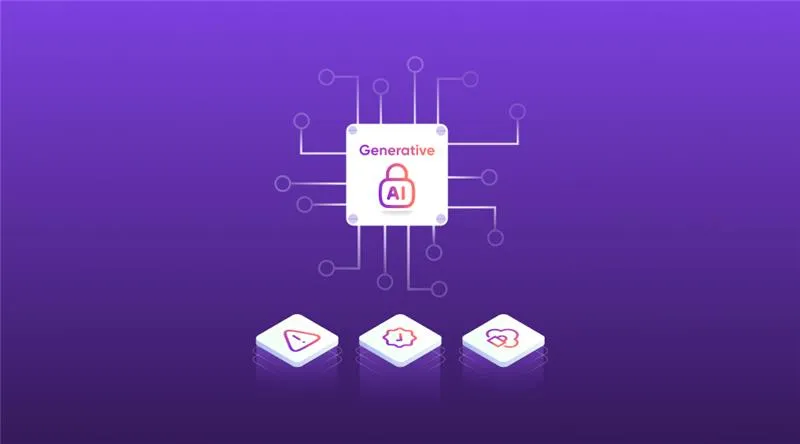
Technology

7 min
Generative AI is moving fast into enterprises, from banks to hospitals to government agencies. Adoption is rapid, but security planning lags. Unlike traditional systems, these models can be exploited through prompt injection, poisoned data, or manipulated to leak sensitive information. They are also misused for phishing, deepfakes, and malicious code.

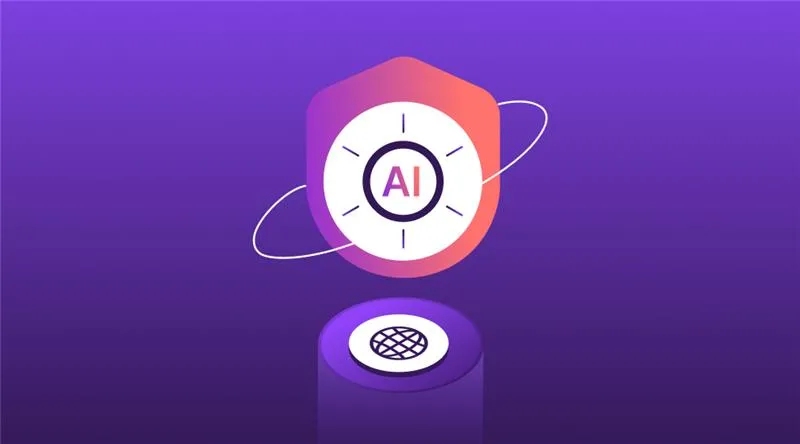
Technology

7 min
AI-powered Web Application Firewalls (WAFs) go beyond static rules by using machine learning, anomaly detection, and predictive analysis to block zero-day threats, reduce false positives, and protect APIs at scale. Unlike traditional WAFs, they self-learn, adapt in real time, and cut operational costs while improving compliance and trust.

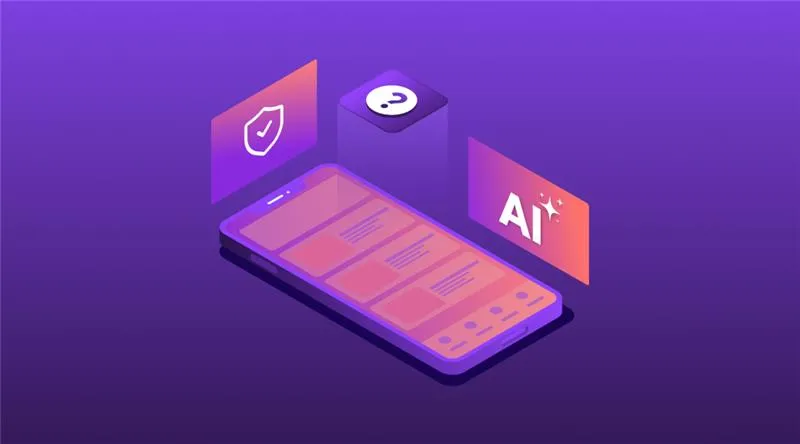
Technology

5 min
AI is redefining mobile app security by transforming how threats are detected, tested, and prevented. From continuous monitoring and fraud detection to compliance with regulations, AI ensures apps remain resilient against modern risks. This means safer apps, protected users, and stronger businesses. Investing in AI-driven security today builds trust, drives growth, and secures long-term competitive advantage.

Feeling lost!! Book a slot and get answers to all your industry-relevant doubts